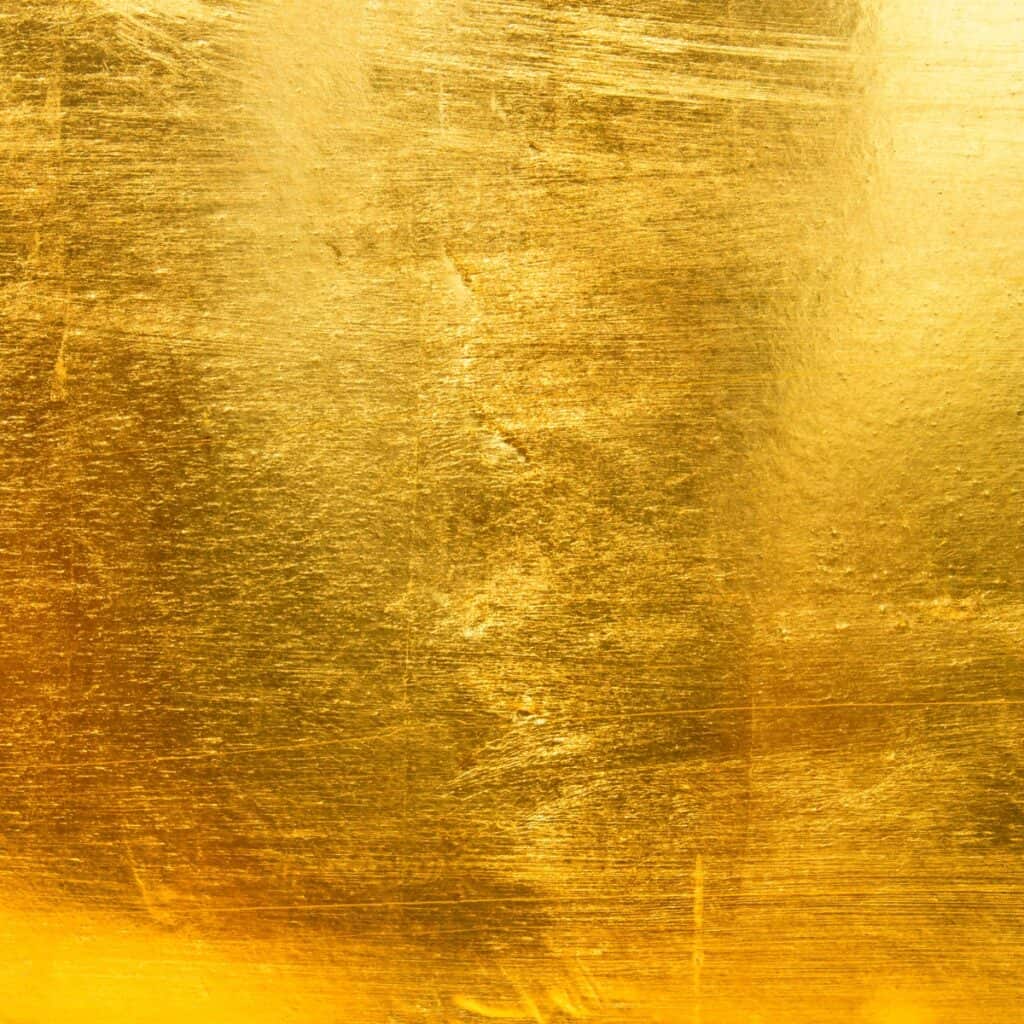Gold is a chemical element with symbol Au (from ) and atomic number 79. In its purest form, it is a bright, slightly reddish yellow, dense, soft, malleable and ductile metal.
Chemically, gold is a transition metal and a group 11 element. It is one of the least reactive chemical elements, and is solid under standard conditions.
The metal therefore occurs often in free elemental (native) form, as nuggets or grains, in rocks, in veins and in alluvial deposits. It occurs in a solid solution series with the native element silver (as electrum) and also naturally alloyed with copper and palladium.

Less commonly, it occurs in minerals as gold compounds, often with tellurium (gold tellurides).
Gold’s atomic number of 79 makes it one of the higher atomic number elements that occur naturally in the universe, and is traditionally thought to have been produced in supernova nucleosynthesis to seed the dust from which the Solar System formed.
Because the Earth was molten when it was just formed, almost all of the gold present in the Earth sank into the planetary core.
Therefore most of the gold that is present today in the Earth’s crust and mantle is thought to have been delivered to Earth later, by asteroid impacts during the late heavy bombardment, about 4 billion years ago.
Gold resists attacks by individual acids, but it can be dissolved by aqua regia (“royal water” [nitro-hydrochloric acid], so named because it dissolves “the king of metals”).
The acid mixture causes the formation of a soluble gold tetrachloride anion. Gold compounds also dissolve in alkaline solutions of cyanide, which have been used in mining.
It dissolves in mercury, forming amalgam alloys; it is insoluble in nitric acid, which dissolves silver and base metals, a property that has long been used to confirm the presence of gold in items, giving rise to the term acid test.
This metal has been a valuable and highly sought-after precious metal for coinage, jewelry, and other arts since long before the beginning of recorded history.
In the past, a gold standard was often implemented as a monetary policy within and between nations, but gold coins ceased to be minted as a circulating currency in the 1930s, and the world gold standard (see article for details) was finally abandoned for a fiat currency system after 1976.
The historical value of gold was rooted in its medium rarity, easy handling and minting, easy smelting, non-corrodability, distinct color, and non-reactivity to other elements.
A total of 174,100 tonnes of gold have been mined in human history, according to GFMS as of 2012. This is roughly equivalent to 5.6 billion troy ounces or, in terms of volume, about 9020 m3, or a cube 21 m on a side.
The world consumption of new gold produced is about 50% in jewelry, 40% in investments, and 10% in industry.
Gold’s high malleability, ductility, resistance to corrosion and most other chemical reactions, and conductivity of electricity have led to its continued use in corrosion resistant electrical connectors in all types of computerized devices (its chief industrial use).
Gold is also used in infrared shielding, colored-glass production, and gold leafing. Certain gold salts are still used as anti-inflammatories in medicine.
I'm Joost Nusselder, the founder of Tools Doctor, content marketer, and dad. I love trying out new equipment, and together with my team I've been creating in-depth blog articles since 2016 to help loyal readers with tools & crafting tips.
